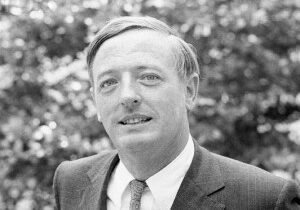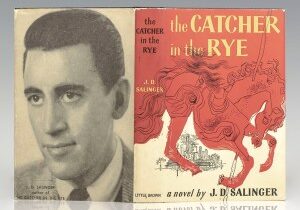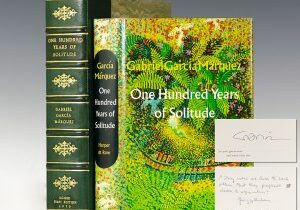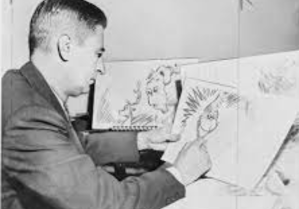Celebrated on the third Monday in February in honor of the first president of the United States, George Washington, President’s Day was first established as a federal holiday in 1879 by an Act of Congress and continues to be a day of celebration, commemorating the presidency as an institution and America’s Founding Fathers.
In observance of this important day of remembrance, we invite you to browse our most recent acquisitions in early Americana including rare portraits, first editions, and historic signed documents written and signed by the earliest presidents of the United States of America.
American statesman and soldier George Washington served as the first President of the United States from 1789 to 1797 and was one of the Founding Fathers of the United States. He served as Commander-in-Chief of the Continental Army during the American Revolutionary War, and later presided over the 1787 convention that drafted the United States Constitution. He is popularly considered the driving force behind the nation’s establishment and came to be known as the “father of the country,” both during his lifetime and to this day.

Rare autograph document signed by George Washington as President of the Society of the Cincinnati during the first general meeting of the Society and 5 years prior to his election and inauguration as the first President of the United States of America.
Five years prior to his election and inauguration as the first President of the United States of America, Washington served as the first President of the Society of the Cincinnati. Conceived of by Henry Knox in an effort to establish a fraternal organization for all officers who had served in the American War for Independence, The Society of the Cincinnati was founded in early May 1783 at the headquarters of General Friedrich Wilhelm von Steuben at Verplanck House in Fishkill, New York.
The concept of using Cincinnatus as an emblem of the Order was particularly resonant with Americans since the life of this mid-fifth century Roman nobleman and farmer closely paralleled that of many who had served, with George Washington in the vanguard. Lucius Quinctius Cincinnatus was called upon to repel two hostile tribes that threatened Rome. He issued his orders, which were efficiently carried out, and vanquished the enemy. Although elected a dictator for six months and voted a triumph by the Senate, Cincinnatus stepped down just after fifteen days and returned to private life on his farm. Similarly, at the conclusion of hostilities, Washington returned to his plantation at Mount Vernon.
In 1803, Washington’s close friend and associate, John Marshall published The Life of George Washington, the first biography about a U.S. president ever published, spanning five volumes and just under one thousand pages. Marshall’s description of the life, character, and achievements of the “Father of America” is unparalleled by any other author. As a contemporary and peer of Washington, he had a unique and intimate perspective on the man that no other historian could claim.
The work “is political history as well as biography… the only comprehensive account by a great statesman of the full founding of the United States— of the founding of an independent people as well as of its government… There is no other concentrated history of the essentials by such an authority on American institutions” (Robert K. Faulkner).

Rare sammelband collection of thirteen sermons and orations addressed upon the occasion of George Washington’s death
Washington died on December 14th, 1799 and was buried at Mount Vernon in Virginia. In his Last Will and Testament, written only months before his death, Washington left explicit directions for the emancipation of each of his 123 slaves, to be carried out after the death of his wife Martha. Legislature was passed in Virginia toward the end of the American Revolution in 1782 making it legal for slave holders to emancipate their slaves without an special action by the government.
In his will, Washington left a detailed slave census as well as stipulations regarding the treatment of the emancipated slaves who were sick and elderly, orphaned children, and the binding of children to masters and mistresses who would provide them with an education. Upon his death, memorial processions were held in every major city and thousands wore mourning clothes for months; Martha Washington was known to have worn a mourning cloak for over a year.

Exceptionally rare 16-page autograph letter signed by and entirely in the hand of Founding Father John Adams defending the ultimate necessity of American sovereignty and its precedence over international alliances.
The second president of the United States, John Adams, served as the first vice president of the United States from 1789 to 1797, and subsequently the second president of the United States, from 1797 to 1801. A lawyer and political activist prior to the revolution, Adams was devoted to the right to counsel and presumption of innocence. He defied anti-British sentiment and successfully defended British soldiers against murder charges arising from the Boston Massacre. Adams was a Massachusetts delegate to the Continental Congress and became a principal leader of the Revolution. He assisted in drafting the Declaration of Independence in 1776 and was its foremost advocate in Congress.
As a diplomat in Europe, he helped negotiate the peace treaty with Great Britain and secured vital governmental loans. Adams was the primary author of the Massachusetts Constitution in 1780, which influenced the United States’ own constitution, as did his earlier Thoughts on Government. Adams was elected to two terms as vice president under President George Washington and was elected as the United States’ second president in 1796. He was the only president elected under the banner of the Federalist Party. He and his wife generated a family of politicians, diplomats, and historians now referred to as the Adams political family, which includes their son John Quincy Adams, the sixth president of the United States. John Adams died on July 4, 1826 – the fiftieth anniversary of the adoption of the Declaration of Independence – hours after Jefferson’s death.

First edition John Adams’ Landmark Work: A Defence of the Constitutions of Government of the United States of America
A year after the ratification of the Declaration of Independence, Adams published his landmark treatise, A Defence of the Constitutions of Government of the United States of America. Adams published the work on constitutional theory as a response to the liberal French statesman Turgot, who had criticized the new American state constitutions for their conservative economic framework. Adams’s Defence was often cited in the debates of the Constitutional Convention. “A work marked by insight, breadth of views, conviction, courage, and—we may venture to add—much wisdom”- Larned, Literature of American History 2287.
The third President of the United States, Thomas Jefferson was the principal author of the Declaration of Independence and later served as President of the United States from 1801 to 1809. Prior to his presidency, he was elected the second Vice President of the United States, serving under John Adams from 1797 to 1801. A proponent of democracy, republicanism, and individual rights motivating American colonists to break from Great Britain and form a new nation, he produced formative documents and decisions at both the state and national level. Jefferson was an avid bibliophile and, by the end of his life, had amassed a large library and wine collection.

First edition of Thomas Jefferson’s A Manual of Parliamentary Practice; the first American book on parliamentary procedure
As Vice President of the United States, Jefferson served as the Senate’s presiding officer from 1797 to 1801. Throughout these four years, Jefferson worked on various texts and, in early 1800, started to assemble them into a single manuscript for the Senate’s use. In December 1800 he delivered his manuscript to printer Samuel Harrison Smith, who delivered the final product to Jefferson on 27 February 1801. The Manual is arranged in fifty-three categories from (1) The Importance of Adhering to Rules to (53) Impeachment. Each section includes the appropriate rules and practices of the British Parliament along with the applicable texts from the U.S. Constitution and the thirty-two Senate rules that existed in 1801.
In addition to the rare pieces featured above, our collection includes several first editions and historic documents signed by Millard Fillmore, Abraham Lincoln, Ulysses S. Grant, Theodore Roosevelt, William Howard Taft, and many others.
Browse our complete collection of Americana and explore Presidents and World Leaders.













